- Pisa |
- Pisa |
Diese Seite ist Teil des Projektes
- Pisa |
- Pisa |
Pisa: |
|
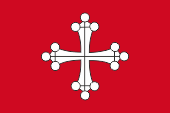 |
Flagge von Pisa |
| Pisa war ursprünglich eine griechische Siedlung und wurde eine der 12 Bundesstädte Etruriens. Die Stadt war seit 180 eine römische Kolonie. Zur Zeit ihrer Blüte (vom 11. bis zum 13. Jahrhundert) gehörte die Republik Pisa zu den wichtigsten Seestädten der Region (Amalfi, Genua, Pisa und Venedig). Im Jahre 1399 kam Pisa an das Herzogtum Mailand (unter den Visconti), im Jahre 1406 kam es durch Kauf an das Herzogtum Florenz. | Pisa was originally a Greek settlement and was one of the 12 federal cities of Etruria. The city was a Roman colony since 180 A.D. At the time of its flowering (from the 11th to the 13th century), the Republic of Pisa was one of the most important port cities of the region (Amalfi, Genoa, Pisa and Venice). In 1399 Pisa came to the Duchy of Milan (under the Visconti), and in 1406 it came by purchase to the Duchy of Florence. |
| Quelle/Source: Discovery '97 | |
Amalfi: |
|
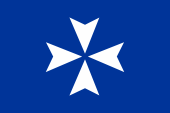 |
Flagge von Amalfi |
| Amalfi war ab dem 9. Jhd. selbstständig, quasi eine Republik. Zur Zeit ihrer Blüte (vom 10. bis zum 11. Jahrhundert) gehörte die Republik Amalfi zu den wichtigsten Seestädten der Region (Amalfi, Genua, Pisa und Venedig), die durch den Handel zu Macht und Blüte kamen. Im Jahre 1073 wurde Amalfi von den Normannen erobert und verlor an Bedeutung. In den Jahren 1135 und 1137 wurde die Stadt von Pisa angegriffen, wurde relativ schnell bedeutungslos, und letztlich sogar von Pisa abhängig. Im Jahre 1582 kam Amalfi zum Königreich Neapel. | Amalfi
was from the 9th century independent, quasi a republic. At the time of its
flowering (from the 10th to the 11th century), the Republic of Amalfi
was one of the most important port cities in the region (Amalfi,
Pisa, Genoa and
Venice), who came to power and bloom by trade. In 1073 Amalfi was conquered by the Normans and lost its importance. In the years 1135 and 1137 the city was attacked from Pisa, became relatively quickly meaningless, and ultimately even dependent from Pisa. In 1582 Amalfi came to the Kingdom of Naples. |
| Quelle/Source: Wikipedia (D) | |
Königreich Neapel – Kingdom of Naples: |
|
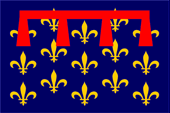 |
Flagge des Königreichs Neapel unter dem Haus Anjou
– flag of the Kingdom of Naples under the House of Anjou, |
| Das Königreich Neapel entstand im Jahre 1282 durch die "Sizilianische Vesper", ein Aufstand der die Insel Sizilien aus dem Königreich Sizilien herauslöst und als eigenes Königreich an das Haus Aragón kommen lässt. Das verbleibende Königreich Sizilien (inoffiziell auch Königreich Neapel oder Neapel-Sizilien) blieb bis 1442 beim Haus Anjou. | The Kingdom of Naples came into being in 1282 by the "Sicilian Vespers", a uprising which detaches the island of Sicily from the Kingdom of Sicily and let it came as a separate kingdom of the House of Aragón. The remaining Kingdom of Sicily (unofficially called as Kingdom of Naples, or Naples-Sicily) remained to 1442 at the House of Anjou. |
| Quelle/Source: Discovery '97 | |
Römische Republik – Roman Republic: |
|
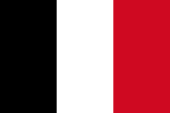 |
1798-1799, |
| Die Römische Republik entstand 1798 als französischer Satellitenstaat von Napoléons Gnaden, als französische Revolutionstruppen in Rom einmarschierten und den Kirchenstaat abschafften. Sie umfasste das Latium und Umbrien. Die französischen Truppen zogen 1799 ab, daraufhin marschierten Truppen des Königreichs Neapel in Rom ein. Das war das Ende der Römischen Republik. Im Jahre 1808 wurde dieses Territorium direkt von Frankreich annektiert. Nach der Niederlage Napoléons wurde der Kirchenstaat 1815 wieder hergestellt. | The
Roman Republic was created in 1798 as a French satellite state of Napoleon's
grace, when French revolutionary troops marched into Rome and abolished the
Papal States. It included Latium
and Umbria. |
| Quelle/Source: Wikipedia (D), Volker Preuß | |
Parthenopäische Republik – Parthenopean Republic: |
|
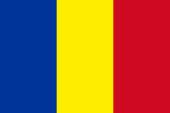 |
Flagge der Parthenopäischen Republik |
| Die Parthenopäische Republik entstand als französischer Satellitenstaat von Napoléons Gnaden im Januar 1799, als französische Revolutionstruppen das Königreich Neapel besetzten und die Monarchie stürzten. Weil die Gegner Napoléons im Norden Italiens einmarschierten, mussten die französischen Truppen die Parthenopäische Republik sehr schnell wieder verlassen. Schon im Juni 1799 beendete ein Volksaufstand unter Führung des Kardinals Fabrizio Ruffo diese sogenannte Republik, und der König aus dem Hause Bourbon wurde wieder eingesetzt. Der Staat war benannt nach Parthenope, eine der Sirenen in der griechischen Mythologie. Als sie gestorben war, wurde sie an einer kleinen Insel vor dem heutigen Nepael angespült. Daher wurde Parthenope in Nepael als Stadtgöttin verehrt. | The
Parthenopean Republic was created as a French satellite state of Napoleon's
grace in January 1799, when French revolutionary troops occupied the Kingdom of
Naples and the monarchy collapsed. |
| Quelle/Source: Brockhaus Konversationslexikon 1894-1896, Volker Preuß | |
Transpadanische Republik – Transpadane Republic: |
|
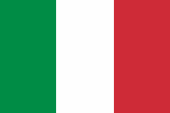 |
1796–1797, |
| Die Transpadanische Republik entstand als französischer Satellitenstaat von Napoléons Gnaden im November des Jahres 1796, nach dem Eindringen der Französischen Revolutiontruppen in Oberitalien. Die Republik umfasste in etwa die ehemalige österreichische Lombardei (Herzogtümer Mailand und Mantua). Im Februar 1797 schlossen sich Bologna und Ferrara der Transpadanischen Republik an. Als die Transpadanische Republik im Juni 1797 zur Cisalpinischen Republik umgebildet wurde, schloss sich der Rest der Cispadanischen Republik an diesen Staat an. | The
Transpadane Republic was created as a French satellite state of Napoleon's
grace in November 1796, after the invasion of the French revolutionary
troops in northern Italy. |
| Quelle/Source: Wikipedia (D) | |
Cispadanische Republik – Cispadane Republic: |
|
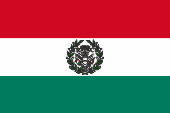 |
1796–1797, |
| Die Cispadanische Republik entstand als französischer Satellitenstaat von Napoléons Gnaden im Jahre 1796, nach dem Eindringen der Französischen Revolutiontruppen in Oberitalien. Die Republik umfasste in etwa das Herzogtum Modena, sowie Bologna und Ferrara (im Norden der Romagna). Im Februar 1797 schlossen sich Bologna und Ferrara der Transpadanischen Republik an. Als die Transpadanische Republik im Juni 1797 zur Cisalpinischen Republik umgebildet wurde, schloss sich der Rest der Cispadanischen Republik an diesen Staat an. | The Cispadane
Republic was created as a French satellite state of Napoleon's grace in
1796, after the invasion of the French revolutionary troops in northern
Italy. |
| Quelle/Source: Wikipedia (D) | |
Cisalpinische Republik – Cisalpine Republic: |
|
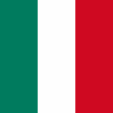 |
1797–1802, |
| Die Cisalpinische Republik entstand als französischer Satellitenstaat von Napoléons Gnaden im Jahre 1797, nach wichtigen Siegen gegen Österreich in Oberitalien. Dazu wurden die Cispadanische und die Transpadanische Republik vereinigt. Im Jahre 1802 wurde der Staat in Italienische Republik umbenannt und im Jahre 1805 zum Königreich Italien umgewandelt. | The
Cisalpine Republic was created as a French satellite state of Napoleon's grace in
1797, after major victories against Austria
in northern Italy. So the Cispadane Republic
and the Transpadane Republic were merged
to the Cisalpine Rebublic. In 1802, the state was renamed to Italian Republic and became converted to the Kingdom of Italy in 1805. |
| Quelle/Source: Wikipedia (D) | |
Italienische Republik – Italian Republic: |
|
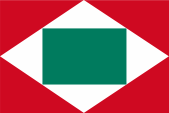 |
1802–1805, |
| Die Italienische Republik entstand als französischer Satellitenstaat von Napoléons Gnaden im Jahre 1802 durch die Umbenennung der Cisalpinischen Republik. 1805 wurde der Staat zum Königreich Italien umgewandelt. | The
Italian Republic was created as a French satellite state of Napoleon's grace in
1802, by renaming of the Cisalpine Republic. In 1805 the state was converted to the Kingdom of Italy. |
| Quelle/Source: Wikipedia (D) | |
Königreich Italien – Kingdom of Italy: |
|
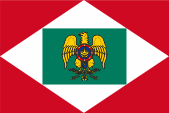 |
1805–1814, |
| Das Königreich Italien ist nicht mit dem heutigen Italien gleich zu setzen, das erst im Jahre 1861 gegründet wurde. Dieses Königreich Italien hier entstand 1805 als französischer Satellitenstaat von Napoléons Gnaden durch die Umwandlung der Italienischen Republik in eben dieses Königreich, natürlich mit ihm selbst als König. | The
Kingdom of Italy is not to deal with the today's Italy,
which was founded not until 1861. |
| Quelle/Source: Brockhaus Konversationslexikon 1894-1896, Volker Preuß, Jürgen Kaltschmitt | |
Insel Elba – Elba Island: |
|
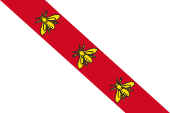 |
Flagge der Insel Elba – flag of Elba Island, Quelle/Source, nach/by: Flags of the World, Dank an Felix Hohenstein |
| Die Insel Elba (italienisch: Ìsola d'Elba) ist eine italienische Mittelmeerinsel zwischen Korsika und Italien. Sie ist 224 km² groß, und im Jahre 1997 betrug die Einwohnerzahl 27.300 Einwohner. Die Insel ist gebirgig (Monte Capanne 1019 m) und hat eine zerrissene Küste. Wirtschaft: Eisenerzabbau, Oliven-, Wein- und Obstbau, Fremdenverkehr. Hauptort ist Portoferràio. Elba war 1814 bis 1815 der Aufenthaltsort Napoléons I. Die Flagge zeigt drei goldene Bienen in einem roten Diagonalstreifen. Die Honigbiene war das persönliche Emblem Napoleon Bonapartes, sozusagen das Wappentier der Person N. Bonaparte, der Adler war das amtliche Wappentier des Kaiseres in (west-)römischer, fränkischer Tradition. Die Vergabe von goldenen Bienen zur Aufnahme in das Wappen war eine speziele Form der Ehrung durch Napoléon für verdienstvolle Personen, Länder oder Städte, wie eben Elba. | The Island of
Elba (Italian: Ìsola d'Elba) is an Italian island in the Mediterranean Sea
between Corsica and Italy. It covers an area of 86 sq.mi., and in 1997 the
population was 27.300 inhabitants. The island is mountainous (Capanne
Mountain 1019 meters) and has a torn coast. Economy: iron ore, olives,
vineyards and orchards, tourism. Capital is Portoferraio. Elba was from 1814
to 1815 the residence of Napoléon I. The flag shows three golden bees in a red diagonal stripe. The honey bee was the personal emblem of Napoleon Bonaparte, so to speak the animal emblem of the person N. Bonaparte, the eagle was the official armor of the emperor in (West-)Roman, Franconian tradition. The award of golden bees for inclusion into coats of arms was a special form of honoring by Napoléon for meritorious persons, countries or cities, like the island of Elba. |
| Quelle/Source: Discovery '97, Jürgen Kaltschmitt, nearbees.de | |
Triest – Trieste: |
|
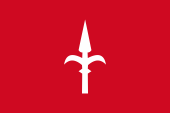 |
Flagge von Triest – flag of Trieste, Quelle/Source, nach/by: Wikipedia (D) |
|
mehr Infos? hier klicken → Triest |
more Info? click here → Trieste |
Istrien – Istria: |
|
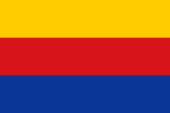 |
Flagge von Istrien – flag of Istria, Quelle/Source: nach/by Wikipedia (D) |
|
mehr Infos? hier klicken → Istrien |
more Info? click here → Istria |
| Historische Staaten in Italien – Historical States in
Italy: ca. 1850–1858 alle Staatsbezeichnungen in Englisch – all state denominations in English |
|
| Landkarte/Map: Volker Preuß |
| heutige Regionen Italiens – today's Regions of Italy: alle Bezeichnungen in Italienisch – all denominations in Italian |
|
| Landkarte/Map: Volker Preuß |